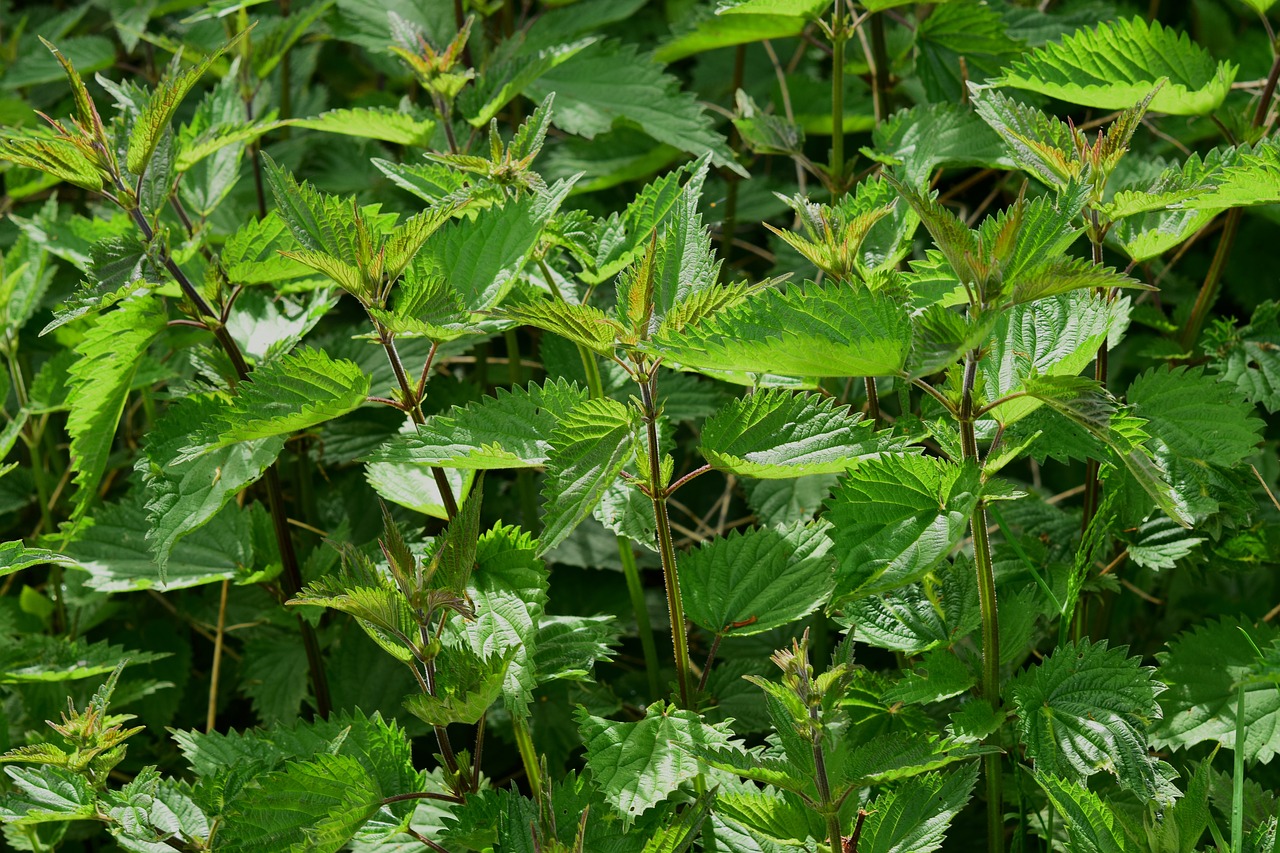Guest post by Kevin Jameson
Hi. I’m Kevin Jameson, an allotment gardener for nearly 30 years together with my lovely wife Angela. I’ve been interested in gardening all my life thanks to my Mum. She’s 90 and is still as keen as ever. Once you have the bug it seldom leaves you.
We try to garden in a sustainable way using organic methods. Mostly with very good results and a steady supply of produce but as any seasoned gardener will say, you never stop learning. That’s part of the joy of it. I’m very pleased to have an opportunity to contribute to the blog and share some of our gardening experiences with you.
Reusing Empty Kindling Nets in your Garden
You may occasionally purchase Caledonian Horticulture Firewood Kindling which comes in woven nets. For me these lightweight woven plastic nets have many alternative uses in the garden and allotment.
Storing Equipment
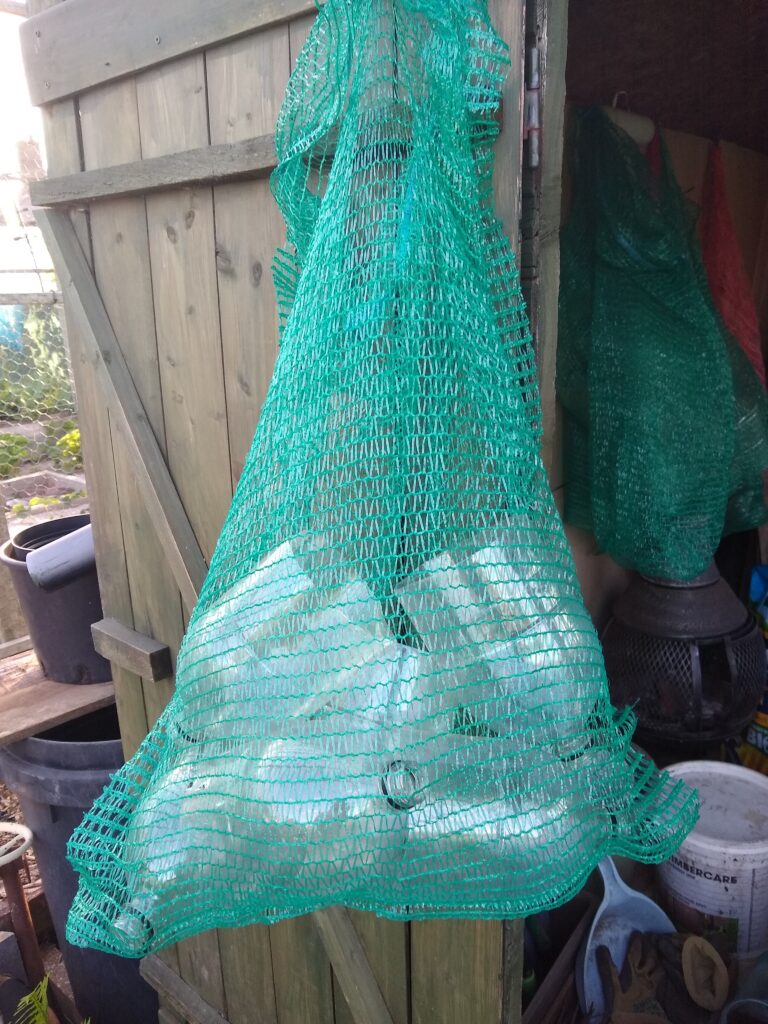
The empty kindling nets are great for storing all sorts of equipment such as my bottle mini-cloches.
They are also brilliant for drying and storing onions, garlic, borlotti beans and other veg.
The nets have quite an open weave so are prefect for allowing the air to circulate and stop damp building up.
The nets are easily hung up so provide a very flexible storage solution.
Special Net Brew
My favourite re-use option though is to make a special net brew. I use the empty kindling net in a fashion similar to what a tea bag does.
Here is a quick recipe for super liquid plant feed using comfrey and/or stinging nettles.
Supplies
- Half a barrow full of stinging nettles or comfrey chopped. Use strong gloves with arms covered when handling these plants. Both are common plants readily available at this time of year.
- One kindling/log net
- A large container or bin with a lid or cover filled with water
- A big stone for weight
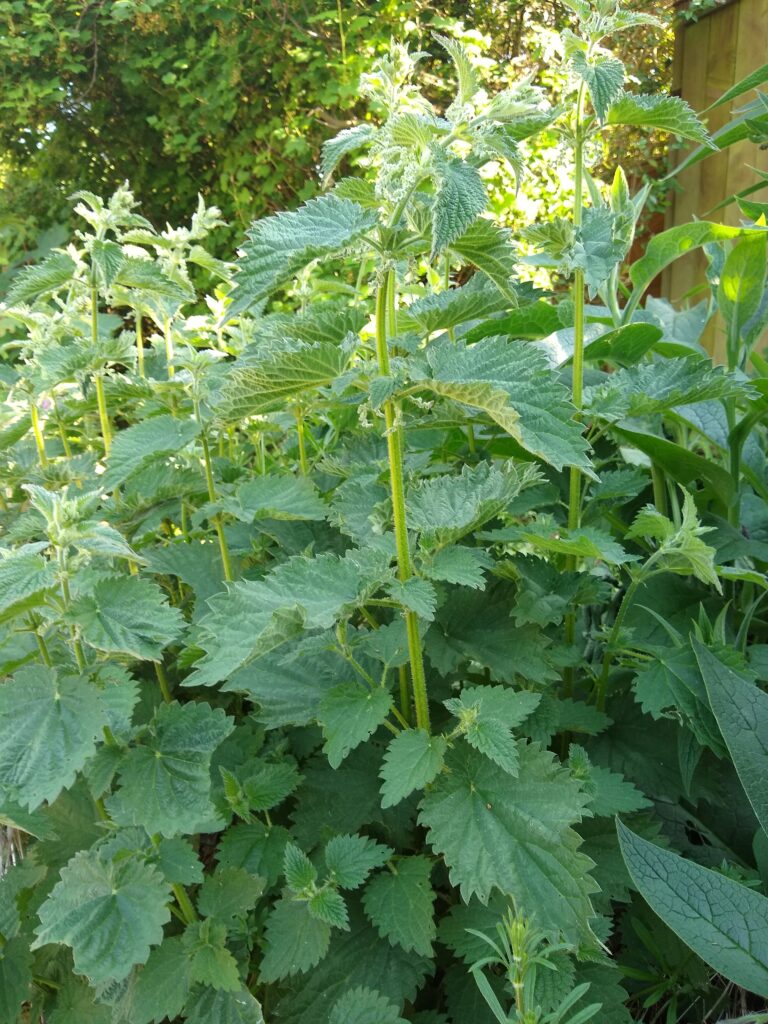
Nettles
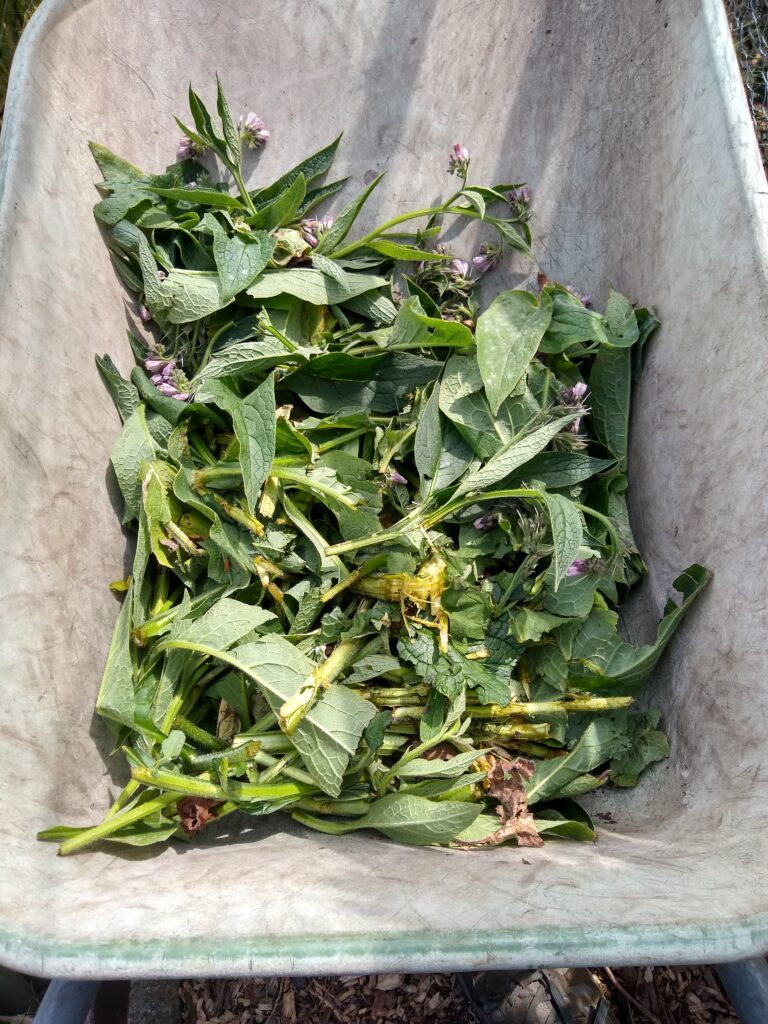
Comfrey
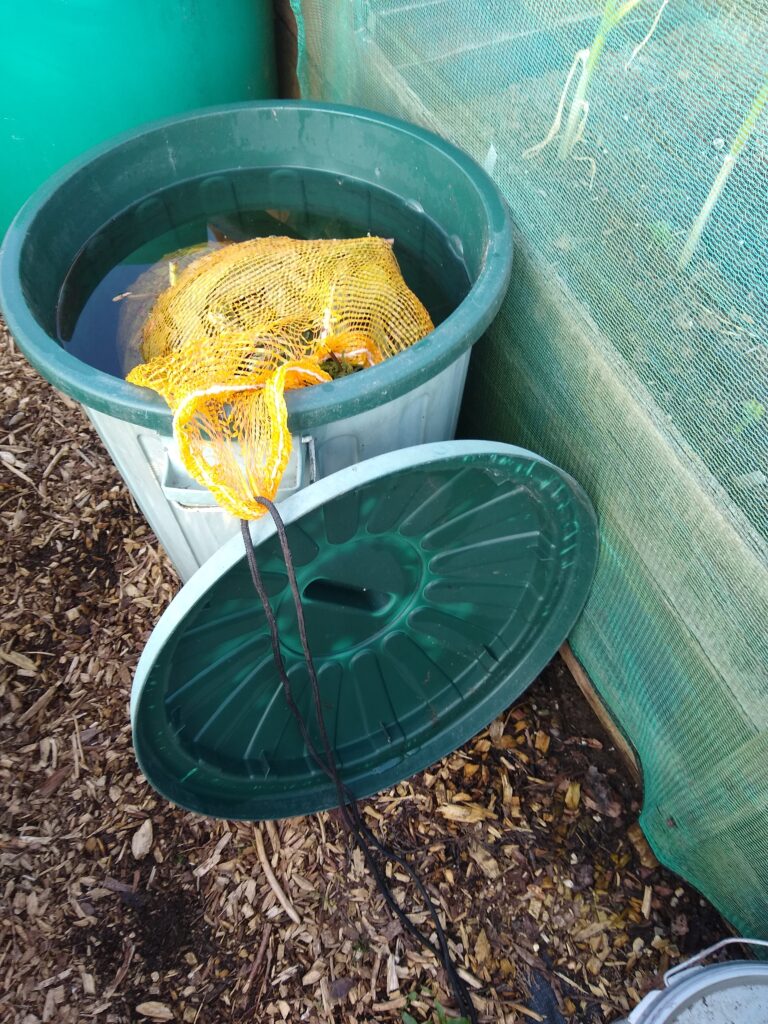
The net stewing
Method
- Put the stone in the net and then stuff in the chopped nettles/comfrey.
- Lower the net into the container of water and fasten with a piece of string or rope.
- Cover the container.
- In about 2 weeks the contents of the net will have fermented and the net can be carefully removed.
- The resulting liquid in the container is an excellent high-nutrient liquid plant food (although it does not smell very pleasant).
Use
This liquid feed should be diluted one part to five parts water and is very good in particular for tomatoes, beans, peppers and strawberries or just as a general purpose feed for pot plants. Any smell disappears as soon as the feed is applied.
In my opinion, this feed which is free from nature is every bit as good as manufactured liquid plant fertilisers.
Give it a go and don’t be put off by the pong. It’s quite natural after all!
-
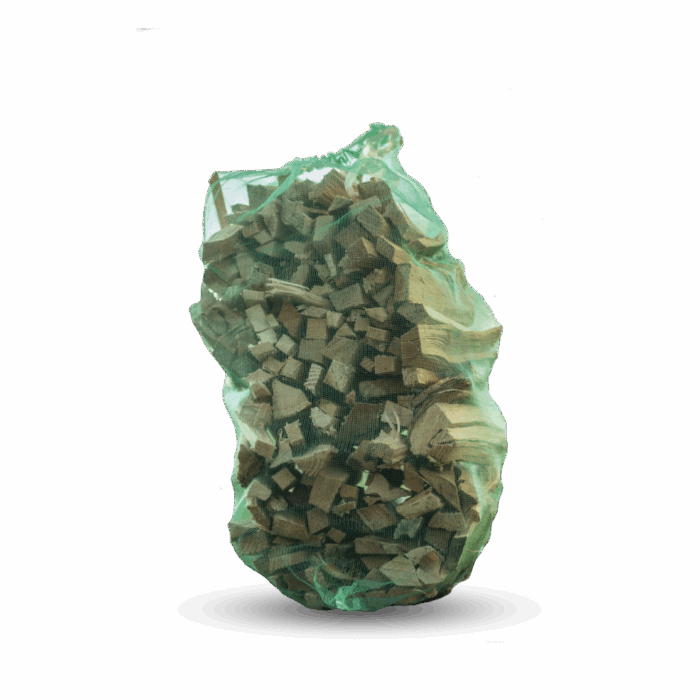 Kiln Dried Kindling Bags£13.00 inc VATRated 5.00 out of 5 based on 10 customer ratings
Kiln Dried Kindling Bags£13.00 inc VATRated 5.00 out of 5 based on 10 customer ratings -
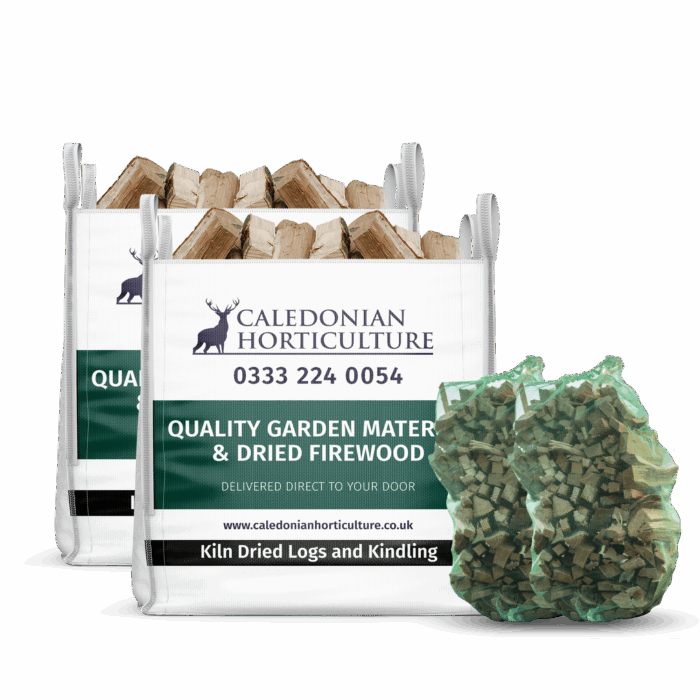 Kiln Dried Log and Kindling Bundle£260.00 inc VATRated 4.94 out of 5 based on 88 customer ratings
Kiln Dried Log and Kindling Bundle£260.00 inc VATRated 4.94 out of 5 based on 88 customer ratings


